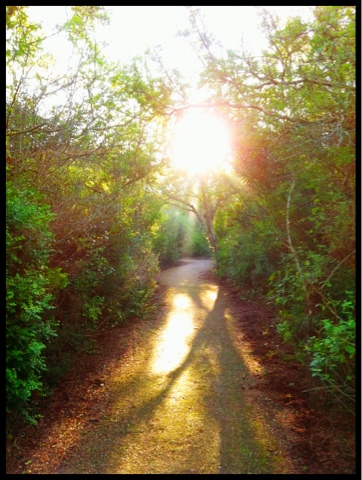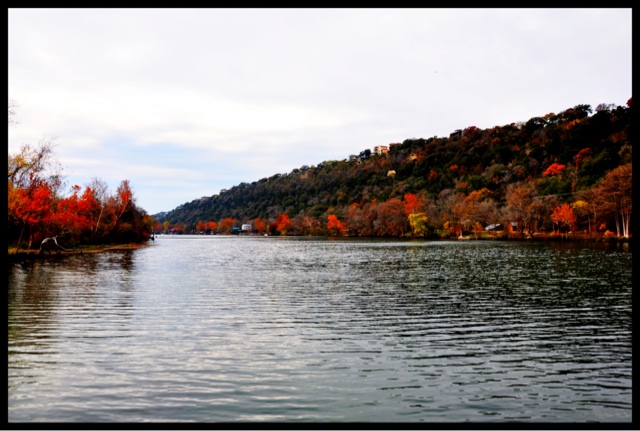This past week I was down in the Brownsville, Texas area visiting some of my wife's family and doing a little birding on the side. Basically the routine is as follows: wake up real early, dress in the dark, shuffle down to the lobby for a waffle in the shape of Texas and an over-ripe banana with the long-haul truckers, then head out the door to get to the birding spot by sun-up. I try to be home within a couple of hours--about when the family is becoming restless. It's rushed but better than nothing.
The great thing about far south Texas is that you can bird while doing just about anything. A trip down to the local taco shop might net 20 species. Also good are trips to the beach, because then family activities and serious birding are no longer separated. I photographed the following Ruddy Turnstone with my portrait lens while while I watched my kids build sandcastles at the same time.
I spent most of my mornings, however, at a nearby state park near Olmito, Texas, Resaca de la Palma. This park has a few species that reside there that are rare or hard to see: the Olive Sparrow and the Long-billed Trasher. Both of these birds love to hang out on the ground in dense brush. Even so, had I not sold my ultra zoom lens, I could have had some great shots as they were not nearly as shy as I would have expected them to be. Nevertheless, these birds are extremely entertaining and were a ton of fun to watch.
Bella Vista Creek
Welcome to Bird of the Day!
You might notice some recent changes to the blog. For one, the banner image above has changed from Mustang Island on the Gulf coast to a picture of a local birding spot near my house. Likewise, I plan to focus many of the upcoming posts on birding that area. On the right hand side of the page you will also see the addition of a new gadget that lists what birds have been seen in that area in the last 30 days. Further below, there is a link to ebird for more historic information about the birds seen at Bella Vista Creek. Feel free and contact me on the blog about what you think. Click on images to enlarge. (All photos by gbmcclure)
Dec 29, 2011
Dec 18, 2011
Dec 15, 2011
Dec 14, 2011
Ringed Kingfisher
(My apologies to those that may have already read a similar version of this post, but a glitch in my Blogger application deleted it this afternoon.)
This past Fall there have been a number of sightings of birds typically not seen this far East. Green-tailed Towhee, Lark Buntings, and Sage Thrashers have all been reported. Why this is happening is a matter of debate (at least in some very small circles). My guess is that it has to do with the record drought we have been experiencing and maybe climate change overall.
Nevertheless, I have always found birding field guides to be amazingly accurate at describing ranges for each species, and also remaining accurate even after ten years or more since the time of last publication. These days, birders are using some really great technology to capture information of where certain species are likely to be at what time of year. Ebird is easily the leader in this field. Birders can upload lists of which species they see by date and GPS coordinates. From this stored information, other birders can look up lists of what they expect to see before they head out the door. Iphone applications such as BirdsEye allow you to see this information while out in the field. Many apps, including this one, allow you to also keep track of a life list, and call up bird songs and field guides. One company is even in the process of using recent technology to allow you to use your device to analyze bird calls for purposes of identification.
I used some of this technology to track the Fox Sparrows I mentioned in a previous post. I also saw on BirdsEye a week or so ago that someone had spotted a Ringed Kingfisher cot to far from my house. I had always been under the assumption that the three North American Kingfishers had fairly clear range boundaries. The most common Belted Kingfisher can be seen just about everywhere in country at some point of the year. The Green Kingfisher and the Ringed Kingfisher, on the other hand, more contained to the south of Texas. Each of the latter I extending just into Southern Travis county. Being a cynic, I had assumed that someone had mistaken a female Belted Kingfisher near my house (the Northwest side of Austin, by Mansfield Dam) as a Ringed Kingfisher. It turns out I was pleasantly proved wrong, as I flushed this female Ringed Kingfisher after walking the side of the Colorado River for merely a 1/4 mile. I had only brought my wide-angle zoom lens for some landscape shots unfortunately, yet I believe the photo is still good enough for identification purposes.
So what might the lesson be? I will be a little disappointed if it's to trust technology over my old Kaufmann field guide.
This past Fall there have been a number of sightings of birds typically not seen this far East. Green-tailed Towhee, Lark Buntings, and Sage Thrashers have all been reported. Why this is happening is a matter of debate (at least in some very small circles). My guess is that it has to do with the record drought we have been experiencing and maybe climate change overall.
Nevertheless, I have always found birding field guides to be amazingly accurate at describing ranges for each species, and also remaining accurate even after ten years or more since the time of last publication. These days, birders are using some really great technology to capture information of where certain species are likely to be at what time of year. Ebird is easily the leader in this field. Birders can upload lists of which species they see by date and GPS coordinates. From this stored information, other birders can look up lists of what they expect to see before they head out the door. Iphone applications such as BirdsEye allow you to see this information while out in the field. Many apps, including this one, allow you to also keep track of a life list, and call up bird songs and field guides. One company is even in the process of using recent technology to allow you to use your device to analyze bird calls for purposes of identification.
I used some of this technology to track the Fox Sparrows I mentioned in a previous post. I also saw on BirdsEye a week or so ago that someone had spotted a Ringed Kingfisher cot to far from my house. I had always been under the assumption that the three North American Kingfishers had fairly clear range boundaries. The most common Belted Kingfisher can be seen just about everywhere in country at some point of the year. The Green Kingfisher and the Ringed Kingfisher, on the other hand, more contained to the south of Texas. Each of the latter I extending just into Southern Travis county. Being a cynic, I had assumed that someone had mistaken a female Belted Kingfisher near my house (the Northwest side of Austin, by Mansfield Dam) as a Ringed Kingfisher. It turns out I was pleasantly proved wrong, as I flushed this female Ringed Kingfisher after walking the side of the Colorado River for merely a 1/4 mile. I had only brought my wide-angle zoom lens for some landscape shots unfortunately, yet I believe the photo is still good enough for identification purposes.
So what might the lesson be? I will be a little disappointed if it's to trust technology over my old Kaufmann field guide.
Subscribe to:
Posts (Atom)


